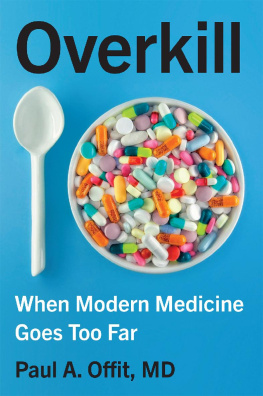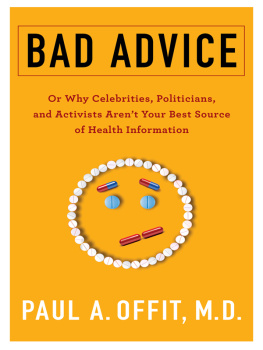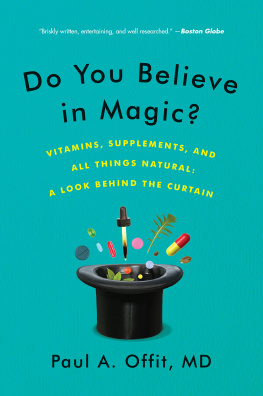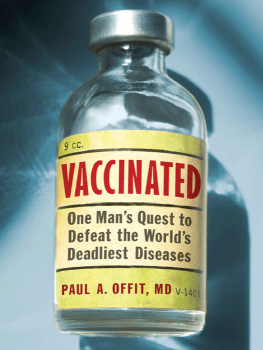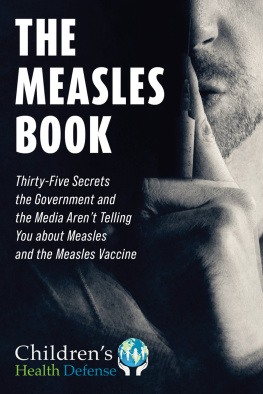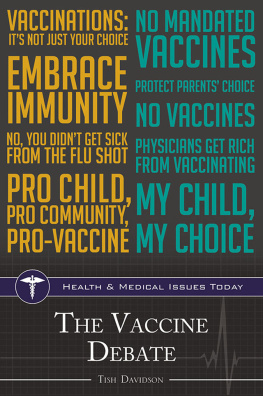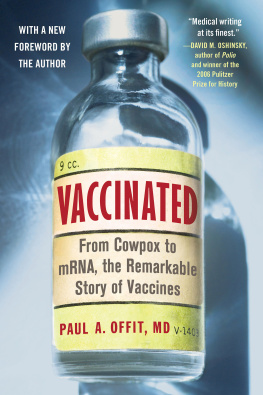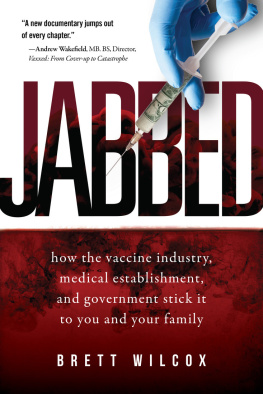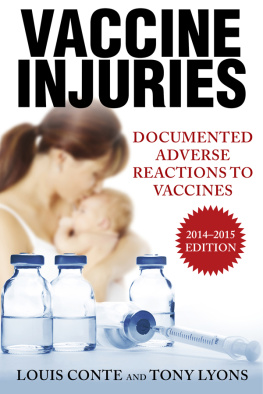THE CUTTER INCIDENT
THE CUTTER
INCIDENT
How Americas First Polio Vaccine
Led to the Growing Vaccine Crisis
Paul A. Offit, M.D .
Yale University Press New Haven and London
Copyright 2005 by Paul A. Offit, M.D.
All rights reserved.
This book may not be reproduced, in whole or in part, including illustrations, in any form (beyond that copying permitted by Sections 107 and 108 of the U.S. Copyright Law and except by reviewers for the public press), without written permission from the publishers.
Set in Stemple Garamond type by Keystone Typesetting, Inc.
Printed in the United States of America by R. R. Donnelley & Sons.
Library of Congress Cataloging-in-Publication Data
Offit, Paul A.
The Cutter incident : how Americas first polio vaccine led to the growing vaccine crisis /
Paul A. Offit.
p. cm.
Includes bibliographical references and index.
ISBN 0-300-10864-8 (cloth : alk. paper)
1. Poliomyelitis vaccineHistory. 2. PoliomyelitisVaccinationUnited StatesHistory.
3. Cutter Laboratories. 4. VaccinesUnited States. I. Title.
QR 189.5. P 6 O 44 2005
614.5490973dc22
2005040105
A catalogue record for this book is available from the British Library.
The paper in this book meets the guidelines for permanence and durability of the Committee on Production Guidelines for Book Longevity of the Council on Library Resources.
10 9 8 7 6 5 4 3 2 1
For Bonnie
and for our children,
Will and Emily
The mass and majesty of this world, all
That carries weight and always weighs the same
Lay in the hands of others; they were small
And could not hope for help, and no help came
W. H. Auden
Contents
CHAPTER 1
Little White Coffins
CHAPTER 2
Back to the Drawing Board
CHAPTER 3
The Grand Experiment
CHAPTER 4
How Does It Feel to Be a Killer of Children?
CHAPTER 5
A Man-Made Polio Epidemic
CHAPTER 6
What Went Wrong at Cutter Laboratories
CHAPTER 7
Cutter in Court
CHAPTER 8
Cigars, Parasites, and Human Toes
CHAPTER 9
Death for the Lambs
Prologue
We live longer than we used to. During the twentieth century, the lifespan of Americans increased by thirty years. Much of the increase was caused by such advances as antibiotics, purified drinking water, sanitation, safer workplaces, better nutrition, safer foods, seatbelts, and a decline in smoking. But no single medical advance had a greater impact on human health than vaccines. Before vaccines, Americans could expect that every year measles would infect 4 million children and kill three thousand; diphtheria would kill fifteen thousand people, mostly teenagers; rubella (German measles) would cause twenty thousand babies to be born blind, deaf, or mentally retarded; pertussis (whooping cough) would kill eight thousand children, most of whom were less than one year old; and polio would permanently paralyze fifteen thousand children and kill one thousand. Because of vaccines most of these diseases have been completely or virtually eliminated from the United States. Smallpoxa disease estimated to have killed 500 million peoplewas eradicated by vaccines.
Despite their success, vaccines are in trouble; only four companies now make them, and two of the four have severely reduced their vaccine research programs. The result has been an unrelenting series of vaccine shortages and a lack of hope that certain vaccines will ever be made. Recent examples show just how bad things have gotten: In 1998, the tetanus vaccine was in such short supply that its use was restricted to emergency rooms. Since 2000, a vaccine to prevent the most common cause of severe pneumonia, bloodstream infections, and meningitis in children (pneumococcus) has been available only intermittently. During these shortages, when the vaccine has been difficult or impossible to obtain, parents could only hope that their children werent among the thousands permanently harmed or killed by pneumococcus every year.
The influenza epidemic in 20032004 started earlier than usual and created a demand for influenza vaccine that dramatically exceeded supply. During that epidemic 36,000 people, including 152 children, died from influenza. In 20042005 the situation worsened: 30 million fewer doses of influenza vaccine were available to the United States than the year before.
Since 1998, there have been severe shortages of nine of the twelve vaccines routinely given to young children. All these shortages resulted in delays in administering vaccines, and some children never received the vaccines they missed.
Why are pharmaceutical companies abandoning vaccines? Part of the answer is rooted in one largely forgotten incident that occurred fifty years ago, when a small pharmaceutical company in northern California made a vaccine that caused an epidemic affecting thousands of people. It was one of the worst biological disasters in American history, exploded the myth of the invulnerability of science and destroyed faith in the vaccine enterprise. As a consequence, juries handed down verdicts to make sure that it never happened again. Ironically, those legal precedents caused pharmaceutical companies to abandon existing vaccines and to reduce their efforts to develop new ones.
Introduction
I thought her ponytail was pulled too tight.
Josephine Gottsdanker
ON MONDAY AFTERNOON, APRIL 18, 1955, JOSEphine Gottsdanker drove her five-year-old daughter, Anne, and ten-year-old son, Jerry, to the pediatrician. Several days earlier Josephine, an intense, bespectacled, highly educated woman, had watched the television program See It Now, in which Edward R. Murrow, a CBS News correspondent, had interviewed Jonas Salk, the scientist who had just developed a polio vaccine. Josephine wanted Salks new vaccine for her children. In the doctors office she watched the nurse take a vial of vaccine out of the refrigerator, draw the vaccine into a properly sterilized glass syringe, and inject it into the muscle of Annes upper right leg. Minutes later, the procedure was repeated for her son.
Summer was near, and Josephine Gottsdanker, like most American mothers in the 1950s, was afraid. She was afraid of other children. And she was afraid of swimming pools, water fountains, city streets, recreational camps, and neighbors houses. She was afraid that this summer her children would be among the tens of thousands claimed every year by polio.
The tragedies caused by polio were fierce and unrelenting. It was an atmosphere of grief, terror, and helpless rage, remembered a nurse who worked on the medical wards at a Pittsburgh hospital. It was horrible. I remember a high school boy weeping because he was completely paralyzed and couldnt move a hand to kill himself. I remember paralyzed women in iron lungs giving birth to normal babies. A daughter whose mother was a victim of polio in Phoenix, Arizona, remembered that during her first night in the hospital, when the virus had raged through her body, deadening muscle after muscle but leaving her on fire with pain, doctors performed an emergency tracheotomy to keep her from suffocating. Her throat muscles useless, she was unable to breathe, cough, or swallow on her own. It was 1943, a former camper remembered. We were on Schroon lake in New York State at a camp for boys called Idylwold. Four of the boys got polio that summer. One day no one could find our head counselor, Bill Lilly. He took what happened to those boys pretty hard. The police were called and, after they searched all around the lake, they found that Bill had hung himself from a treehung himself. We were all huddled around the beach when the police came to tell us. Ill never forget it.

Next page

